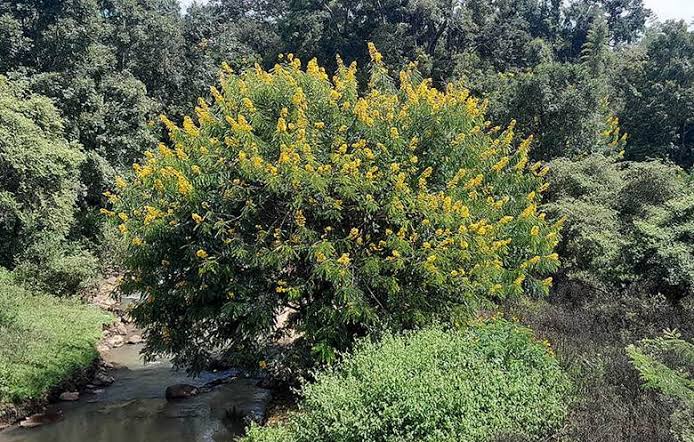A silent battle is raging in the Nilgiri Biosphere Reserve against an insidious invader threatening the delicate balance of this ecological haven. The invader in question is not a ferocious beast or a voracious insect, but a seemingly innocuous plant -Senna spectabilis – a toxic invasive weed that has cast a shadow over the pristine landscapes of Wayanad, Mudumalai, Bandipore, and beyond.
The Tamil Nadu Forest Department is not only addressing the invasive weed issue but also transforming the forests into verdant havens for the region’s diverse fauna.
Speaking with Indian Masterminds, IFS officer Srinivas Reddy, the Principal Chief Conservator of Forests and Chief Wildlife Warden, shared about the project in detail.
SENNA SPECTABILIS
“This plant is of no use to any wildlife, neither their leaves are edible nor the wood is of any timber importance,” Mr. Reddy said.
The Senna spectabilis, notorious for its resilience and rapid propagation, posed a unique challenge for conservationists. Its presence not only hindered the growth of native flora but also created a thick shade, preventing the emergence of an understory.
This relentless invader had to be confronted, and a novel solution emerged from an unexpected quarter – the Tamil Nadu Newsprint and Paper Ltd (TNPL).

TOXIC WEED TO PAPER
TNPL decided to collaborate with the forest authorities to tackle the invasive weed problem. Recognizing the potential of Senna spectabilis as a resource rather than a menace, they devised a strategy to convert the weed into paper. The process involved blending 80% of the invasive weed with 20% of Eucalyptus, resulting in the production of 6,000 metric tons of printing and writing paper.
The impact of this initiative rippled across Mudumalai Tiger Reserve and Sathyamangalam Tiger Reserve, where a staggering 21,178 tonnes of Senna spectabilis were extracted, paving the way for the restoration of native species. This not only revitalized the ecosystem but also provided a crucial foraging ground and resting area for the region’s wildlife, including elephants, gaurs, and deer.
REMOVAL OF WEED
Mr. Reddy emphasized the importance of not disturbing the existing native species, underscoring their commitment to selective removal of Senna spectabilis without harming the surrounding biodiversity.
“The cleared areas witnessed a remarkable resurgence of indigenous grasses and the emergence of previously unseen flora, such as a wild rice variety not reported from Mudumalai before,” he informed Indian Masterminds.
To combat the invasive weed at its roots, quite literally, a mechanical method was adopted, considering the sensitive nature of the tiger reserve. Root stumps were meticulously debarked, and a covering sheet was applied to facilitate the decomposition of the root bed – a meticulous process aimed at preserving the ecological integrity of the reserve without resorting to chemical interventions.
The once-thriving habitat, ensnared by the invasive clutches of Senna spectabilis, is now on the path to recovery, ensuring a harmonious coexistence between man and nature in this ecological marvel.

































